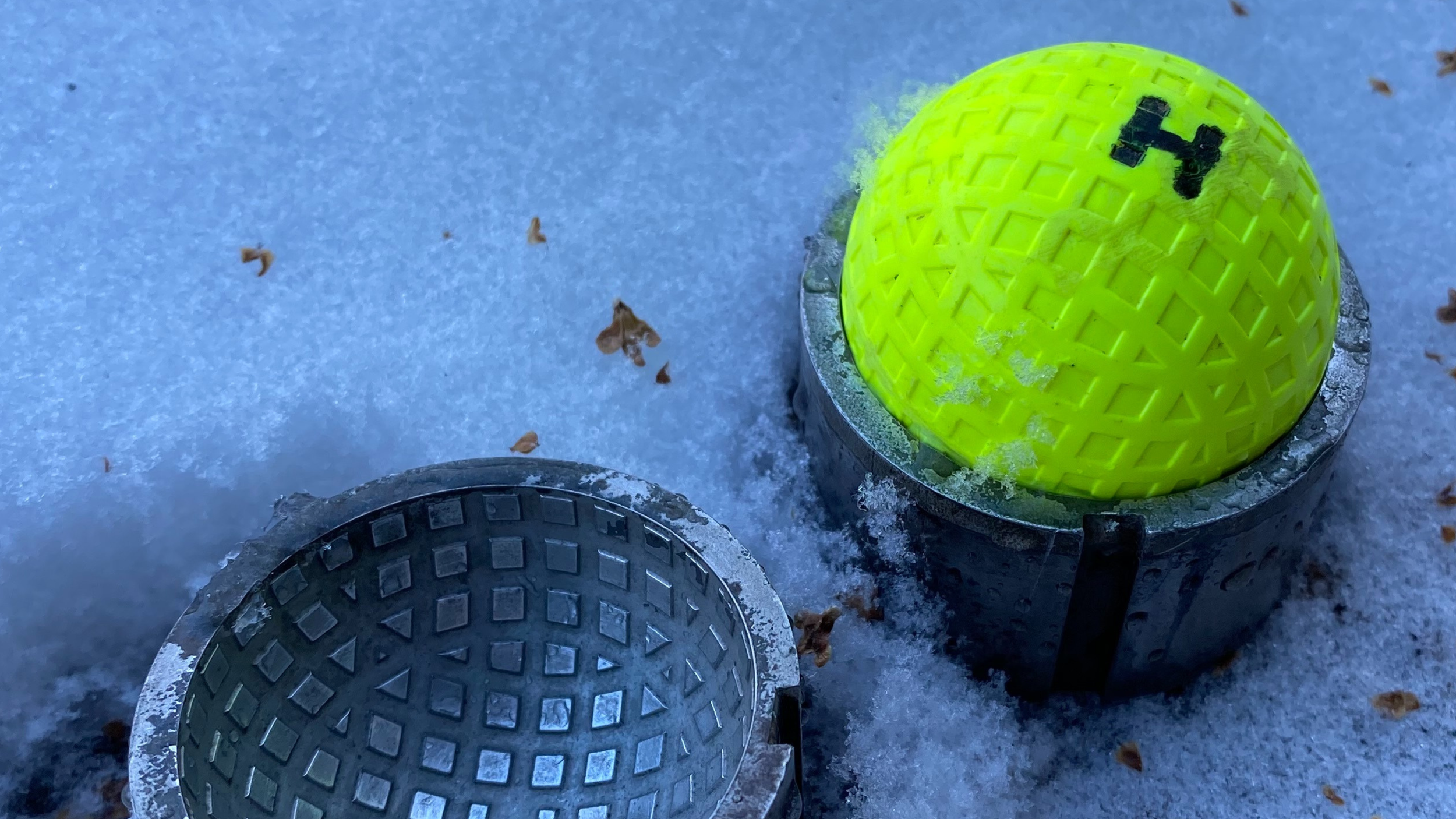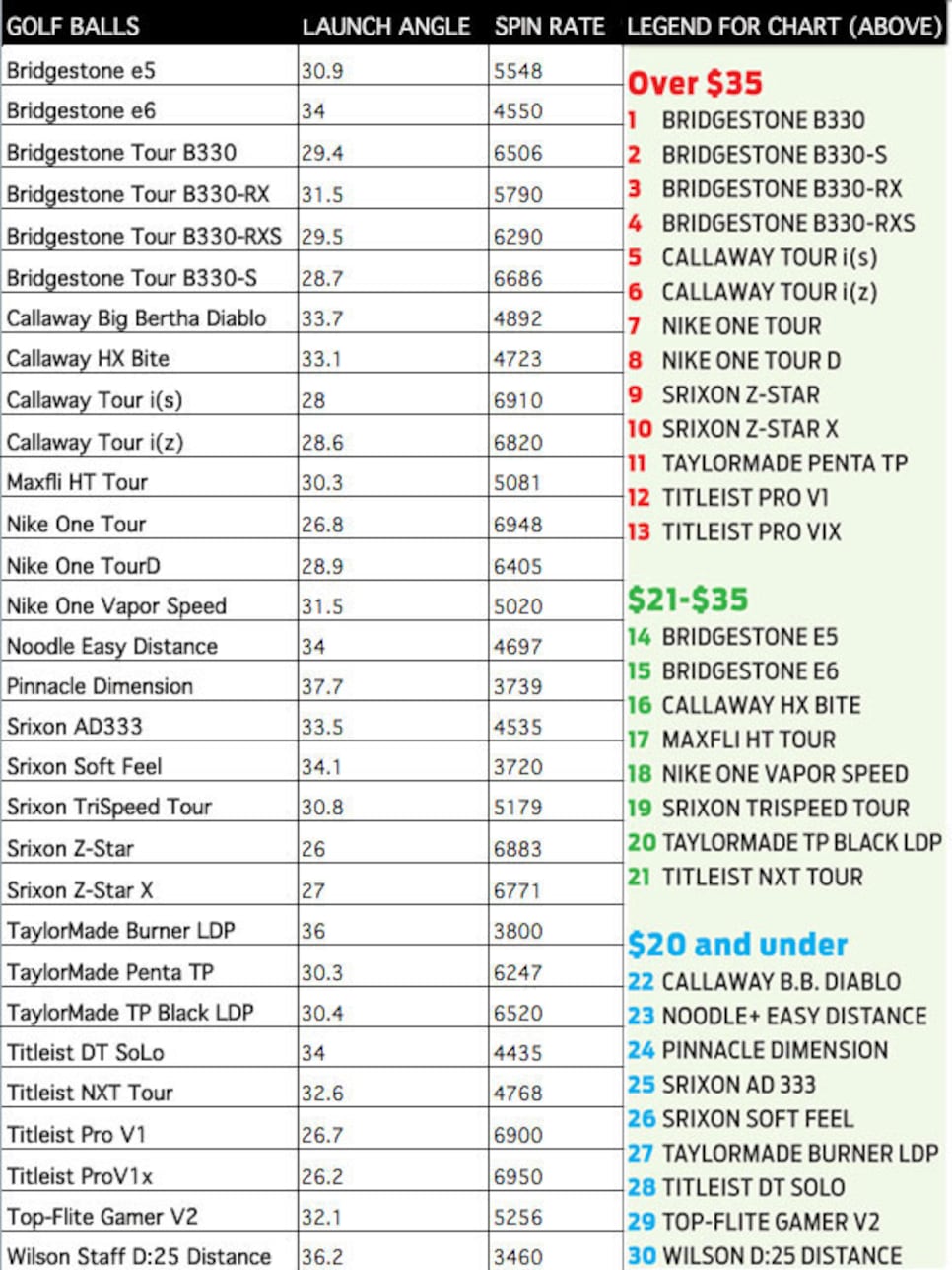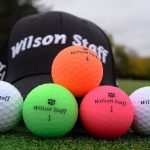Use a golf ball that matches your skill level and playing style. Beginners should use two-piece balls for distance and durability.
Choosing the right golf ball can significantly impact your game. Golf balls come in various types designed for different skill levels and playing styles. Beginners and high-handicap players benefit from two-piece balls, which offer greater distance and durability. Intermediate players might prefer three-piece balls for better control and feel.
Advanced players often choose multi-layered balls for maximum spin and precision. Understanding your game and testing different balls can help you find the perfect fit. The right golf ball can enhance your performance and enjoyment on the course.

Credit: www.srixon-share.com
Types Of Golf Balls
Choosing the right golf ball can change your game. Different golf balls fit different play styles. The construction of a golf ball affects its performance. Let’s explore the types of golf balls available.
Two-piece
Two-piece golf balls are the most common. They have a solid core and a tough cover. These balls are very durable. They offer long distance and less spin. Beginners and casual players often use two-piece balls.
Three-piece
Three-piece golf balls have a solid or liquid core. They also have a mantle layer and a soft cover. These balls offer a better feel and spin control. Many intermediate players prefer three-piece balls for improved performance.
Four-piece
Four-piece golf balls include an extra layer. They have a core, two mantle layers, and a soft cover. These layers work together to provide maximum distance and control. Advanced players often use four-piece balls for better accuracy.
Five-piece
Five-piece golf balls are the most advanced. They have five layers: a core, three mantle layers, and a soft cover. Each layer serves a specific purpose. These balls offer the best performance in distance, spin, and control. Professional players often choose five-piece balls.
| Type | Core | Mantle Layers | Cover | Best For |
|---|---|---|---|---|
| Two-Piece | Solid | None | Tough | Beginners, Casual Players |
| Three-Piece | Solid or Liquid | One | Soft | Intermediate Players |
| Four-Piece | Solid | Two | Soft | Advanced Players |
| Five-Piece | Solid | Three | Soft | Professional Players |

Credit: www.hickoryhacker.com
Ball Construction
Understanding the construction of a golf ball is crucial. The design affects how the ball performs. Let’s explore the different parts of a golf ball.
Core
The core is the heart of the golf ball. It determines the ball’s distance and feel. Most cores are made from rubber. A softer core provides a better feel. A harder core offers more distance.
Cover
The cover protects the core. It influences the ball’s spin and durability. Covers are made from urethane or surlyn. Urethane covers give more spin and control. Surlyn covers are more durable and cheaper.
Dimples
Dimples on the golf ball affect its flight. They reduce air resistance and help the ball go farther. The number and pattern of dimples vary. Most golf balls have 300 to 500 dimples. Each pattern has a unique impact on performance.
Skill Level
Choosing the right golf ball depends on your skill level. Your skill level impacts your game, so select wisely. Below, we break down the best golf balls for each skill level.
Beginner
Beginners should focus on forgiveness and distance. A softer ball helps reduce spin. This provides a straighter shot. Here are some key features to look for:
- Two-piece construction for durability
- Lower compression for a softer feel
- Enhanced distance with minimal effort
These features help beginners improve their game quickly. Popular choices include Titleist TruFeel and Callaway Supersoft.
Intermediate
Intermediate players need a balance of distance and control. A mid-compression ball provides this balance. Look for these features:
- Three-piece construction for better control
- Medium compression for balanced performance
- Enhanced short game spin for better control
These features help intermediate players fine-tune their skills. Popular choices include Titleist Tour Soft and Bridgestone e6.
Advanced
Advanced players need maximum control and feel. A multi-layered ball provides this precision. Key features include:
- Four or five-piece construction for ultimate control
- High compression for increased distance
- Maximum spin for short game precision
These features help advanced players master their game. Popular choices include Titleist Pro V1 and Callaway Chrome Soft.

Credit: www.golfdigest.com
Swing Speed
Your swing speed is crucial in choosing the right golf ball. A golf ball that matches your swing speed can improve your game significantly. Let’s explore which golf ball is best for different swing speeds.
Low Speed
Golfers with a low swing speed (under 85 mph) need a softer ball. Softballs compress easily, helping with distance. They also provide better control and feel around the greens.
Recommended Balls:
- Titleist DT TruSoft
- Callaway Supersoft
- Wilson Staff Duo Soft+
Using these balls can help you maximize your distance. They also help improve your accuracy.
Medium Speed
Golfers with a medium swing speed (85-100 mph) need a balanced ball. These balls should offer a mix of distance and control. A medium compression ball is ideal.
Recommended Balls:
- Titleist Pro V1
- Callaway Chrome Soft
- TaylorMade TP5
These balls provide a good balance between distance and control. They help maintain accuracy while also achieving good distance.
High Speed
Golfers with a high swing speed (over 100 mph) need a firmer ball. High compression balls are ideal for maximizing distance. They also provide more control.
Recommended Balls:
- Titleist Pro V1x
- Bridgestone Tour B XS
- TaylorMade TP5x
These balls can handle the high energy transfer of fast swings. They help achieve maximum distance while maintaining control.
Feel And Spin
Choosing the right golf ball can greatly impact your game. Two critical factors to consider are feel and spin. These elements can influence your control and distance. Understanding the differences helps you make an informed choice.
Soft Feel
A golf ball with a soft feel gives you a sense of control. It is ideal for golfers who value touch. Soft balls are usually made from materials like urethane. They compress easily, providing a satisfying sensation on impact. Players often prefer these for short game precision.
Firm Feel
Some golfers prefer a firm feel for more distance. These balls are typically made from harder materials. They offer less compression, which can translate to longer shots. A firm feel can be beneficial for those with faster swing speeds. It can also provide a more robust feedback on each shot.
High Spin
High spin golf balls can enhance your game. They create more backspin, leading to better control. This feature is useful for approach shots. It helps in stopping the ball quickly on the green. High spin balls are great for skilled players seeking precision.
Low Spin
Low spin balls are ideal for reducing side spin. This can help in achieving straighter shots. They are useful for players who struggle with hooks or slices. Low spin also means less backspin, which can add distance to your drives. It’s a good choice for beginner golfers.
| Feel Type | Characteristics | Ideal For |
|---|---|---|
| Soft Feel | More control, better short game | Touch-focused players |
| Firm Feel | More distance, robust feedback | Fast swing speeds |
| High Spin | Better control, more backspin | Skilled players |
| Low Spin | Less side spin, more distance | Beginners |
Distance Vs. Control
Choosing the right golf ball involves balancing distance and control. Each player has unique needs and preferences. This guide will help you understand which ball suits your game.
Maximizing Distance
Do you want to hit the ball farther? Opt for a ball designed for distance. These balls usually have a harder cover and a lower spin rate. This helps the ball travel a longer distance.
Here are some features to look for:
- Low spin rate: Reduces air resistance, making the ball go farther.
- Hard cover: Enhances durability and provides better energy transfer.
- High compression: Ideal for players with faster swing speeds.
| Feature | Benefit |
|---|---|
| Low Spin Rate | Increases distance by reducing air resistance. |
| Hard Cover | Durable and offers better energy transfer. |
| High Compression | Best for players with faster swing speeds. |
Enhancing Control
If you aim for precision and control, choose a ball with a softer cover and higher spin rate. These features allow better control over the ball’s flight and landing.
Consider these aspects:
- High spin rate: Improves control and stopping power on the greens.
- Softer cover: Provides better feel and feedback.
- Low compression: Suitable for players with slower swing speeds.
Here’s a table summarizing the key points:
| Feature | Benefit |
|---|---|
| High Spin Rate | Better control and stopping power. |
| Softer Cover | Enhanced feel and feedback. |
| Low Compression | Great for slower swing speeds. |
To sum up, your choice depends on your game style. Whether you prioritize distance or control, understanding these features helps you select the perfect golf ball.
Weather Conditions
Understanding weather conditions can help you choose the right golf ball. Different weather affects golf ball performance. Here are some tips for different weather conditions.
Windy Conditions
Golf balls with a lower spin rate perform better in windy conditions. The lower spin rate reduces the effect of the wind. Choose balls like the Titleist Pro V1 or Bridgestone Tour B X. These balls offer good control and stability.
| Brand | Model | Feature |
|---|---|---|
| Titleist | Pro V1 | Lower Spin Rate |
| Bridgestone | Tour B X | Wind Control |
Wet Conditions
Wet conditions require golf balls with a soft cover. Soft covers improve grip on the clubface. Choose balls like the Callaway Chrome Soft or TaylorMade TP5. These balls maintain performance even when wet.
- Callaway Chrome Soft
- TaylorMade TP5
Cold Weather
In cold weather, golf balls can feel hard. Choose balls designed to stay soft in low temperatures. The Titleist DT TruSoft and Wilson Staff Duo Soft are good choices. These balls help maintain distance and control in cold weather.
- Titleist DT TruSoft
- Wilson Staff Duo Soft
Budget Considerations
Choosing the right golf ball can be challenging. Budget considerations play a crucial role. Understanding affordable and premium options can help you decide.
Affordable Options
Affordable golf balls can still deliver good performance. They are great for beginners and casual players. Here are some top choices:
- Titleist TruFeel: Offers a soft feel and good distance.
- Srixon Soft Feel: Known for its excellent control.
- Wilson Staff Fifty Elite: Combines distance and feel at a low price.
These options are budget-friendly. You can play well without spending much.
Premium Choices
Premium golf balls provide advanced technology. They are ideal for serious golfers. Here are some top picks:
- Titleist Pro V1: Known for its exceptional performance.
- Callaway Chrome Soft: Offers great feel and control.
- TaylorMade TP5: Delivers excellent distance and spin.
These balls come with higher prices. They offer superior performance and quality.
| Golf Ball | Type | Key Feature | Price Range |
|---|---|---|---|
| Titleist TruFeel | Affordable | Soft Feel | $20 – $25 |
| Srixon Soft Feel | Affordable | Control | $20 – $25 |
| Wilson Staff Fifty Elite | Affordable | Distance and Feel | $15 – $20 |
| Titleist Pro V1 | Premium | Exceptional Performance | $45 – $50 |
| Callaway Chrome Soft | Premium | Great Feel | $40 – $45 |
| TaylorMade TP5 | Premium | Distance and Spin | $45 – $50 |
Choose based on your budget and playing style. Both affordable and premium options have their benefits.
Brand Comparisons
Choosing the right golf ball can improve your game. Each brand offers unique features. Let’s compare some popular golf ball brands.
Titleist
Titleist is known for its premium golf balls. The Titleist Pro V1 is famous for its soft feel and long-distance capabilities. Many professional golfers use Titleist balls. They offer excellent control and spin.
Callaway
Callaway golf balls are designed for both distance and control. The Callaway Chrome Soft is a favorite among amateurs and pros. It has a soft feel and great spin control around the greens. Callaway balls often feature innovative core designs.
Taylormade
TaylorMade is another top brand in golf. The TaylorMade TP5 is known for its five-layer construction. This design provides excellent distance and control. TaylorMade golf balls are popular for their speed and low spin off the tee.
Bridgestone
Bridgestone offers golf balls for all skill levels. The Bridgestone Tour B series is popular among advanced players. These balls provide great distance and control. Bridgestone uses cutting-edge technology to enhance performance.
| Brand | Popular Model | Key Features |
|---|---|---|
| Titleist | Pro V1 | Soft feel, long distance, excellent control |
| Callaway | Chrome Soft | Soft feel, great spin, innovative core |
| TaylorMade | TP5 | Five-layer construction, speed, low spin |
| Bridgestone | Tour B | Great distance, control, advanced technology |
Frequently Asked Questions
How Do I Know What Golf Ball Is Right For Me?
To find the right golf ball, consider your skill level, swing speed, and desired control. Test different brands and models. Consult a golf professional for personalized advice.
What Are The Three Types Of Golf Balls?
The three types of golf balls are: two-piece, three-piece, and multi-layer. Two-piece balls offer distance. Three-piece balls provide control. Multi-layer balls balance distance, control, and feel.
Is There A Difference In Golf Balls?
Yes, golf balls differ in materials, construction, and performance. Choose based on your skill level and playing style.
What Is The Best Way To Identify A Golf Ball?
The best way to identify a golf ball is by marking it with a unique symbol or initials. This ensures easy recognition.
Conclusion
Choosing the right golf ball can improve your game significantly. Understand your skill level and preferences. Test different options to find what suits you best. The right ball can enhance your performance and enjoyment on the course. Make an informed choice and watch your game flourish.





